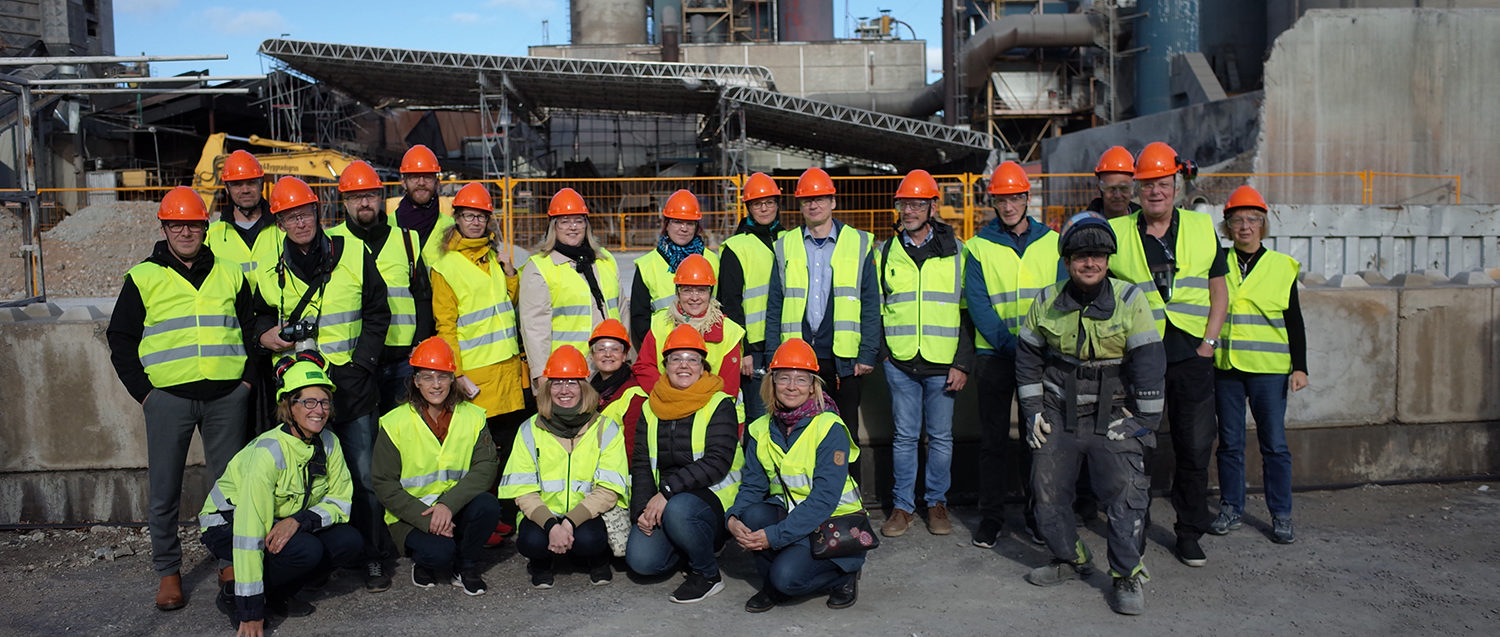
The SEABASED Project ends – parting words
Today, May 31st, is the final day of the SEABASED Project and so this is the last news article to you, our dear followers.
In the beginning of the project three years ago, we did not have a clue of the journey that the project would take us on. The project planned to assess measures that could potentially improve the status of marine areas by reducing the internal load of the sea and to pilot selected measures in enclosed coastal areas in Finland, Åland and Sweden. We surely met our goals and fulfilled our plans as best we could. Words cannot tell how much we learned along the way! From surprises in the legislation, permitting and procurement, to the final challenges from the so well known Covid-19 pandemic, we learned that nothing will stop us from going full steam ahead to provide more knowledge on the sea-based measures.

The project team looking a possible pilot site in 2018.
We are proud to say that the project achieved what it had planned, for the most part. Although some of the piloted methods show great potential, no silver bullet was found to quickly relieve the nutrient load and eutrophication troubling the Baltic Sea. However, some methods for reducing internal load can be useful for improving the environmental conditions in heavily eutrophied, relatively enclosed small bay areas.
One of the main goals of the SEABASED Project was to produce information on the feasibility, risks, monitoring, cost-effectiveness, and development needs of different sea-based measures aiming to reduce the internal nutrient load in the sea. This valuable knowledge on the sea-based measures along with practical experiences has been now compiled into practical guidelines to help Baltic Sea protection in the future. The guidelines are available via this link.
The SEABASED project piloted and assessed measures that seek to improve the status of the selected sea bays by reducing the internal load of the sea. Some of the measures can also support the circular economy by recycling nutrients from sea to land. In the project recycling of the nutrient-rich water for irrigation of fields, binding of phosphorus in the seabed sediment by using natural, limestone-based material (heat-treated marl) and fishing stickleback to enhance predatory fish populations were piloted in Finland, Åland and Sweden. In addition, artificial reefs, and instructions for making a pike factory, a wetland to enhance pike populations, were made in Sweden, and a concept for aquatic compensations was designed, related to the renovation of the Water Act in Åland. The potential of sediment top-layer removal for phosphorus uptake and reducing the oxygen demand in the bottom was studied with incubation tests in laboratory scale.
The results from the field pilots along with other material produced by the SEABASED Project can be found on the project’s website.

Marjukka Porvari from John Nurminen Foundation and Irma Puttonen from the Centre for Economic Development, Transport and the Environment for Southwest Finland smiling after successful spreading of activated limestone in the Kolkka Bay, Finland. Photo: Tara Jaakkola
This project would not have come to life if it was not for the financing from the EU Interreg Central Baltic program. We are very grateful not only for the financing, but also for the guidance and flexibility that the program provided us during the challenges we faced. We are also thankful for Nordkalk’s donation of limestone-material to the project, which enabled us to implement altogether three pilots in Finland and Sweden. And of course all the findings and lessons learned in the project are a result of the hard work and relentless efforts of our project team. The lead partner John Nurminen Foundation wants to thank all the project partners for staying on board also through the troubled waters and pushing through: the Centre for Economic Development, Transport and the Environment for Southwest Finland, the Government of Åland, the Åland Fishfarmers’ Association, Stockholm University and the County Administrative Board of Östergötland. Our Steering Group kept us on the right path and gave us valuable advice on the way, thank you for your efforts! We would also like to thank our associate partners and project HEAWATER for cooperation during the project.
And last, but definitely not least, we thank everyone who has contributed in the project, and given valuable input in achieving our goals, from scientists and stakeholders participating in our events, to everyone who answered our questionnaires. And, of course, all of you who followed our journey.
As the project ends, we hope that the information gathered in the project will be put into good use in the future projects that aim to save our precious Baltic Sea. So feel free to share our material and to make good use of it! You know where to find us, if you have any questions on the project and its findings.
Wishing you all the best towards the future,
Project Manager Miina Mäki (miina.maki(at)jnfoundation.fi) and the SEABASED team


